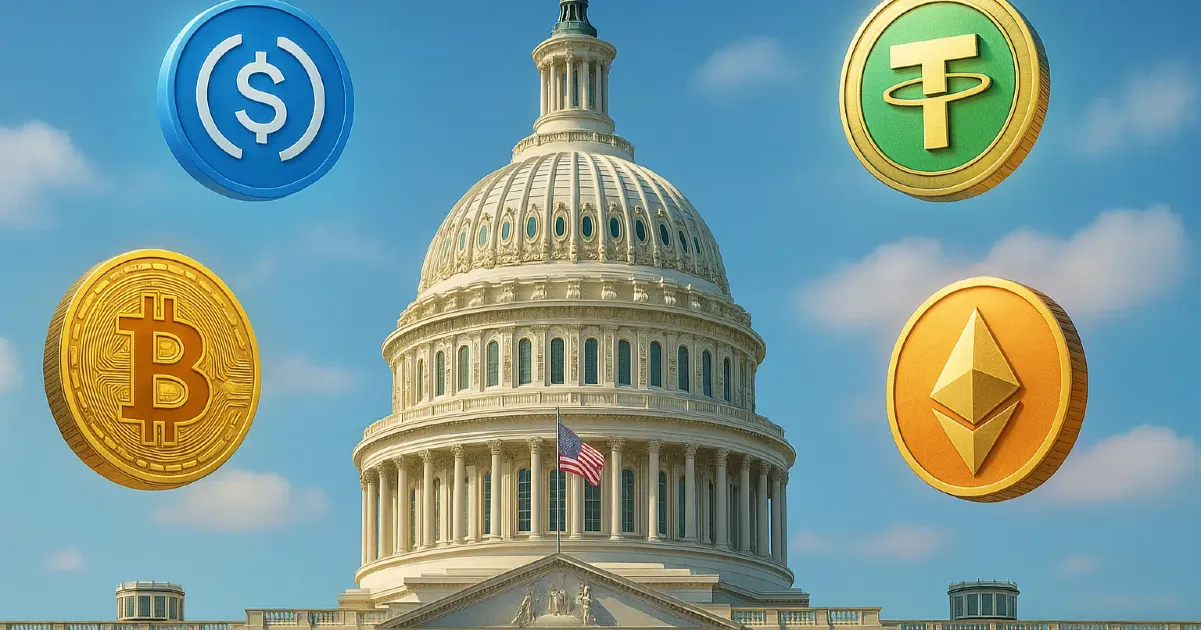Three key pro-crypto bills move through Congress this week: stablecoin safeguards, asset classification clarity, and a fintech sandbox. Will they pass?
The crypto sector is holding its breath this week as three major pro-crypto bills move through Congress. From stablecoin oversight to digital innovation and broader market regulation, the outcomes could reshape the way digital assets integrate into everyday finance. But with differing agendas and heavy lobbying at play, passage is far from assured.
Setting the Stage for Crypto Legislation
Congress has spent years debating how to treat cryptocurrencies. Questions about securities classification, investor protection, and cross-border payments have been raised repeatedly. Now, three bills, each targeting a different challenge, are circulating in committees. Their convergence into what insiders are calling "Crypto Week" could mark a turning point for the industry.
A favorable vote could bring clearer rules, renewed investment, and perhaps a spark of legitimacy for digital asset businesses. But a failure to pass could pull the rug out from under ongoing efforts and prolong market uncertainty.
Bill 1: The Stablecoin Accountability and Investor Protection Act
This measure focuses on stablecoins, digital dollars pegged to real currencies. It requires stablecoin issuers to be federally insured and to keep reserves that fully back each token. Think of it as putting stablecoins under a similar framework to bank deposits. The aim? Protect retail users by ensuring what they hold is always redeemable.
Supporters say this is crucial to build confidence in using stablecoins for payments. But critics argue the rules might limit innovation or make small issuers unviable. Financial giants are already lining up: some favor the safety net, others fear that new costs could favor bigger players.
Bill 2: The Digital Asset Market Structure and Customer Protection Act
The second bill aims to clarify which digital assets count as securities versus commodities. That distinction matters; different regulators have jurisdiction over each type. It would also empower the CFTC to oversee crypto markets more broadly and set up fair custody rules for retail users.
The result could be a much clearer regulatory landscape: exchanges and token projects would know which rulebook they need to follow. Proponents suggest this could encourage institutional adoption. Opponents worry it might give too much power to regulators controlling compliance and custody requirements.
Bill 3: The Financial Innovation and Technology for the 21st Century Act
Finally, there’s the fintech bill. Less flashy, but perhaps broader in impact. It would enable a financial innovation sandbox where startups can test new crypto products under lighter regulation. It also focuses on improving cross-border payments and infrastructure clarity around digital identity and data usage.
Creators argue it could help U.S. fintech companies keep pace with global competitors like Singapore and the EU. But critics question whether introducing experimentation zones without full regulatory guardrails is risky.
Lobbying, Politics, and Potential Gridlock
These bills weren’t written in a vacuum. They reflect intense lobbying from banking associations, crypto startups, and every group in between. Neither party has a decisive majority, so each bill’s fate depends on delicate negotiations.
Political headwinds complicate things further. Some members fear appearing pro-crypto could open them to backlash on consumer protection. Others see these laws as part of a tech leadership narrative. A few have raised eyebrows over industry backers tied to major donors.
There’s also timing: with elections looming and the legislative calendar tight, even one missing vote could delay a bill for months or tank it entirely.
Why The Outcomes Matter
For the crypto industry, this week isn't just legislative; it's foundational. Clear rules around stablecoins might encourage businesses to build U.S.-based payment networks. If regulatory clarity emerges, institutional investors may commit billions. If the fintech sandbox passes, American startups could regain ground lost to jurisdictions with more open policies.
Conversely, failure could stall projects, suppress liquidity, and keep digital asset progress stalled behind murky legal frameworks.
Watching the Votes
As each bill heads toward committee votes, the industry will watch lobbyist influence, inter-agency coordination (between SEC, CFTC, and Treasury), and bipartisan momentum. Opponent amendments and hearing responses could reshape provisions on custody, asset definitions, or innovation carve-outs. All of it will be scrutinized closely.
Expect Elders, CEOs, and investors to step forward with public letters, op-eds, and lobbying campaigns are likely intensifying now. Their voices may tilt the debate in surprising ways.
What Could Come Next
If bills pass, the real work begins: merging the acts into a cohesive legal package, reconciling with existing law, and navigating presidential approval. If one fails, parts of it may re-emerge, perhaps only the stablecoin bill or only the market-structure rules. The failed tracks would still echo in committee drafts for future cycles.
This period may also influence global crypto policy, sending signals to regulators in Europe, Asia, and Latin America about how America treats digital assets.
Final Thoughts
Crypto Week could represent a turning point or a missed opportunity. The industry needs clarity, but Congress must balance innovation with protection. These bills aim to do just that, but their success depends on careful crafting and political calculation.
If they pass, expect headlines about U.S. crypto leadership returning and projects that had left for overseas markets starting to reconsider. If they flop, the message will be clear: uncertainty remains, and crypto regulation stays stuck in limbo.
Stay tuned. This week could shape the decade ahead for digital finance in America.






